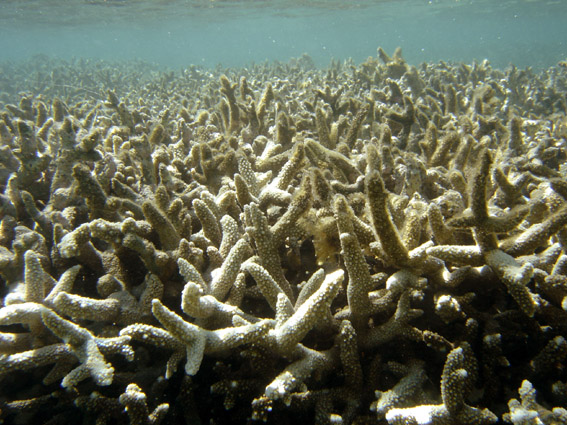If you have ever been lucky enough to see a tropical reef, you will know what I mean: these are places of enormous beauty, and mindboggling biodiversity. Swimming above a reef kind of puts your mind at ease. The colors are absolutely stunning. Or at least they used to be.
Reefs are formed by corals. Corals are extremely interesting organisms for a variety of reasons. Biologically, they are sessile Cnidarians, distant relatives to the jellyfish we sometimes see in the ocean or on the beach. They secrete calcium carbonate, which forms hard structures that are useful to countless other marine organisms. This is classical ecosystem engineering: no corals, no coral reefs, no habitat for millions of fishes, and other critters.
And no aesthetic pleasure for humans. This is an odd phenomenon that was noticed by Charles Darwin: often sexual or natural selection will lead to traits in animals or plants that we find beautiful and pleasing (see Grammar et al. (2002)). Interestingly, this sense of beauty also applies to whole ecosystems, like tropical rainforest or reefs. In direct exploitation of this odd human behavior, reefs attract human tourists, leading to a whole industry, which will likely go away as reefs die.
Sometimes when we talk about climate change we pretend that this is something that will happen in the future. But the reefs are dying now, and we have to ask ourselves if our grandchildren will be able to fully experience a reef, to see it with their own eyes. Will all they ever see be a puny fish-tank with corals in the local zoo?
But beyond this selfish viewpoint maybe an even more important question is what will happen to our fellow humans whose livelihoods depend on well-functioning coral reefs? In fact, tropical islands as human habitat are at risk because the protection provided by reefs is diminished as these living guardians die.But back to biology for a moment: amazingly, our reef-building Cnidarians live with symbiotic algae. The algae employ photosynthesis and provide energy for the corals, which in turn provide a home for the algae, and CO2 for the algae to consume. This is a classical symbiosis, an interaction where both partners benefit. The relationship became so tight over eons of evolution that both partners have a hard time surviving without each other.
Oddly though, as a response to stress, the Cnidarians can eject the algae. And since the algae generate most of the color we associate with reefs, a naked coral is white, or bleached (see the photo at the top of this post). Here is the connection to what we do when we spew CO2 into the air. In a nutshell, greenhouse gases lead to increased temperatures globally, including rising marine temperatures, which is stressful to corals and leads directly to coral bleaching and reefs dying. Cross this with the rising sea-level (see my previous post), and acidification of the oceans and you have a perfect storm. And unfortunately, as Simon Donner and his collaborators show, 1 or 2 degrees Celsius warmer than usual is already too much for the corals.
Coral bleaching has been going on for some time now, but it seems the pace and the severity of bouts of mass coral bleaching has increased in the last few decades and we simply don’t know what the future will bring. The National Oceanic and Atmospheric Administration (NOAA) is keeping an eye on this–though with the current change in the political climate, who knows for how long?
I want to end on a note that might indicate how nature responds: many of the reef dwelling fishes are so colorful (and beautiful to us) because they want to blend in with the colorful corals. Of course against a white background little Nemo is not very well camouflaged. The warty frogfish, however is a chameleon of the seas and can adapt to many backgrounds, including the whiteness of a bleached coral, as recently reported from the Maldives (Grimsditch et al. 2017). How useful this is as a sit-and-wait hunting strategy, when the reef is depleted of fishes is a different question…
One can only speculate what the reduced productivity will do to human consumers: it will likely affect human fisheries, and not only locally, because reefs often serve as cradle for open-ocean fishes. Will humans end up being in the position of frogfish—well prepared, but waiting for fish that never come? And finally, who wants to see a reef without color?

The original uploader was Elapied at French Wikipedia – Transferred from fr.wikipedia to Commons., CC BY-SA 2.0 fr
The original uploader was Elapied at French Wikipedia – Transferred from fr.wikipedia to Commons., CC BY-SA 2.0 fr, Link



